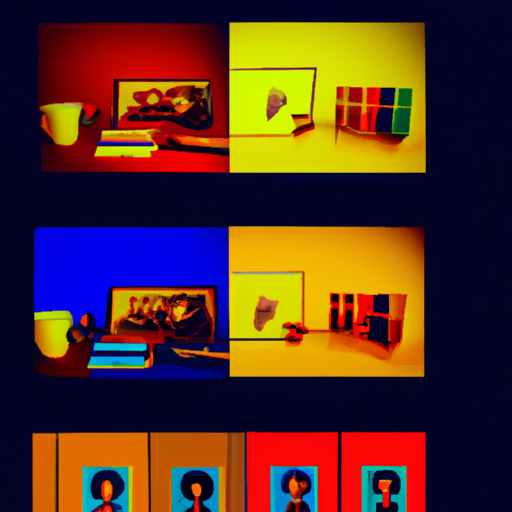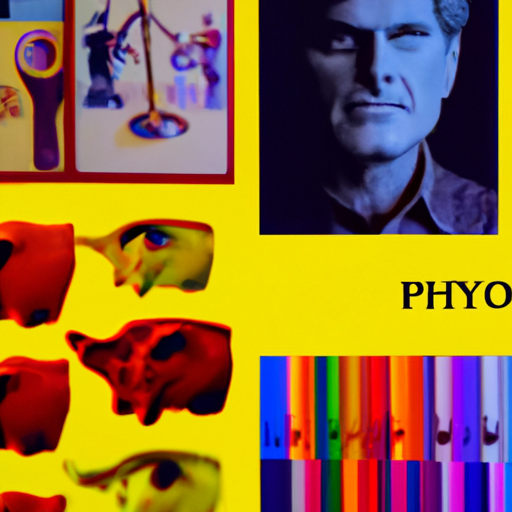
-
Table of Contents
The Role of Psychology in Graphic Design Innovation

Graphic design is a powerful tool that combines art and technology to communicate messages visually. It plays a crucial role in various industries, from advertising and marketing to web design and user experience. While technical skills and creativity are essential in graphic design, the role of psychology should not be overlooked. Understanding human behavior, perception, and cognition can greatly enhance the effectiveness and impact of graphic design innovation. In this article, we will explore the significant role psychology plays in graphic design and how it can be leveraged to create compelling and influential designs.
The Power of Visual Communication
Visual communication is a fundamental aspect of graphic design. It involves using images, colors, typography, and other visual elements to convey messages and evoke emotions. The human brain is wired to process visual information more efficiently than text, making visual communication a powerful tool for capturing attention and conveying complex ideas.
Psychology plays a crucial role in understanding how visual elements are perceived and interpreted by individuals. By understanding the principles of perception and cognition, graphic designers can create designs that effectively communicate their intended message and elicit the desired emotional response.
The Psychology of Color
Color is one of the most influential elements in graphic design. Different colors evoke different emotions and can have a significant impact on how a design is perceived. Understanding the psychology of color can help graphic designers make informed decisions about color choices to create the desired emotional response.
For example, warm colors like red and orange are often associated with energy, passion, and excitement. They can be used to create a sense of urgency or draw attention to specific elements in a design. On the other hand, cool colors like blue and green are often associated with calmness, trust, and reliability. They can be used to create a sense of serenity or convey a sense of professionalism.
By strategically using colors that align with the intended message and target audience, graphic designers can enhance the effectiveness of their designs and create a stronger emotional connection with viewers.
The Role of Typography
Typography is another essential element in graphic design that can greatly influence how a message is perceived. The choice of fonts, font sizes, and spacing can convey different emotions and create different visual hierarchies.
Psychology plays a significant role in typography, as different fonts can evoke different emotions and associations. For example, serif fonts are often associated with tradition, elegance, and reliability, making them suitable for formal and professional designs. On the other hand, sans-serif fonts are often associated with modernity, simplicity, and informality, making them suitable for contemporary and casual designs.
Furthermore, the spacing between letters and lines, known as kerning and leading, can affect readability and visual appeal. Proper spacing can make a design more legible and visually pleasing, while inadequate spacing can make it difficult to read and unappealing.
User Experience and Psychology
Graphic design is not only about creating visually appealing designs but also about enhancing the user experience. User experience (UX) design focuses on creating designs that are intuitive, easy to use, and enjoyable for the user.
Psychology plays a crucial role in UX design, as it involves understanding how users think, behave, and interact with digital interfaces. By applying principles of psychology, graphic designers can create designs that are user-friendly and meet the needs and expectations of the target audience.
For example, the use of visual cues, such as icons and buttons, can help users navigate through a website or application more easily. The placement of these cues and the use of color and contrast can guide users’ attention and make interactions more intuitive.
Additionally, understanding cognitive processes, such as attention and memory, can help designers create designs that are easy to understand and remember. By considering how users process and retain information, designers can create interfaces that are more efficient and effective.
Case Studies: Applying Psychology in Graphic Design
Several case studies demonstrate the successful application of psychology in graphic design innovation. One notable example is the redesign of the Facebook “Like” button. In 2016, Facebook conducted extensive research to understand the emotional impact of the “Like” button and found that users wanted more ways to express empathy. As a result, Facebook introduced a range of reactions, including “Love,” “Haha,” “Wow,” “Sad,” and “Angry.” This change not only provided users with more options to express their emotions but also increased engagement and user satisfaction.
Another case study involves the redesign of the Amazon website. Amazon implemented a one-click ordering system based on the principle of reducing cognitive load. By minimizing the number of steps required to complete a purchase, Amazon significantly improved the user experience and increased conversion rates.
The Future of Psychology in Graphic Design
As technology continues to advance, the role of psychology in graphic design innovation will become even more critical. With the rise of artificial intelligence and machine learning, designers can leverage data and insights from psychology to create personalized and adaptive designs.
For example, by analyzing user behavior and preferences, designers can create customized interfaces that adapt to individual users’ needs and preferences. This level of personalization can enhance user satisfaction and engagement.
Furthermore, as virtual reality (VR) and augmented reality (AR) become more prevalent, understanding the psychology of perception and immersion will be crucial in creating immersive and realistic experiences. By applying principles of psychology, designers can create virtual environments that feel natural and intuitive to users.
Summary
Psychology plays a significant role in graphic design innovation. By understanding human behavior, perception, and cognition, graphic designers can create designs that effectively communicate messages, evoke emotions, and enhance the user experience. The psychology of color, typography, and user experience are all essential considerations in graphic design. Case studies demonstrate the successful application of psychology in graphic design, leading to increased engagement and user satisfaction. As technology advances, the role of psychology in graphic design will continue to evolve, enabling designers to create personalized and immersive experiences. By leveraging psychology, graphic designers can create compelling and influential designs that leave a lasting impact on viewers.
